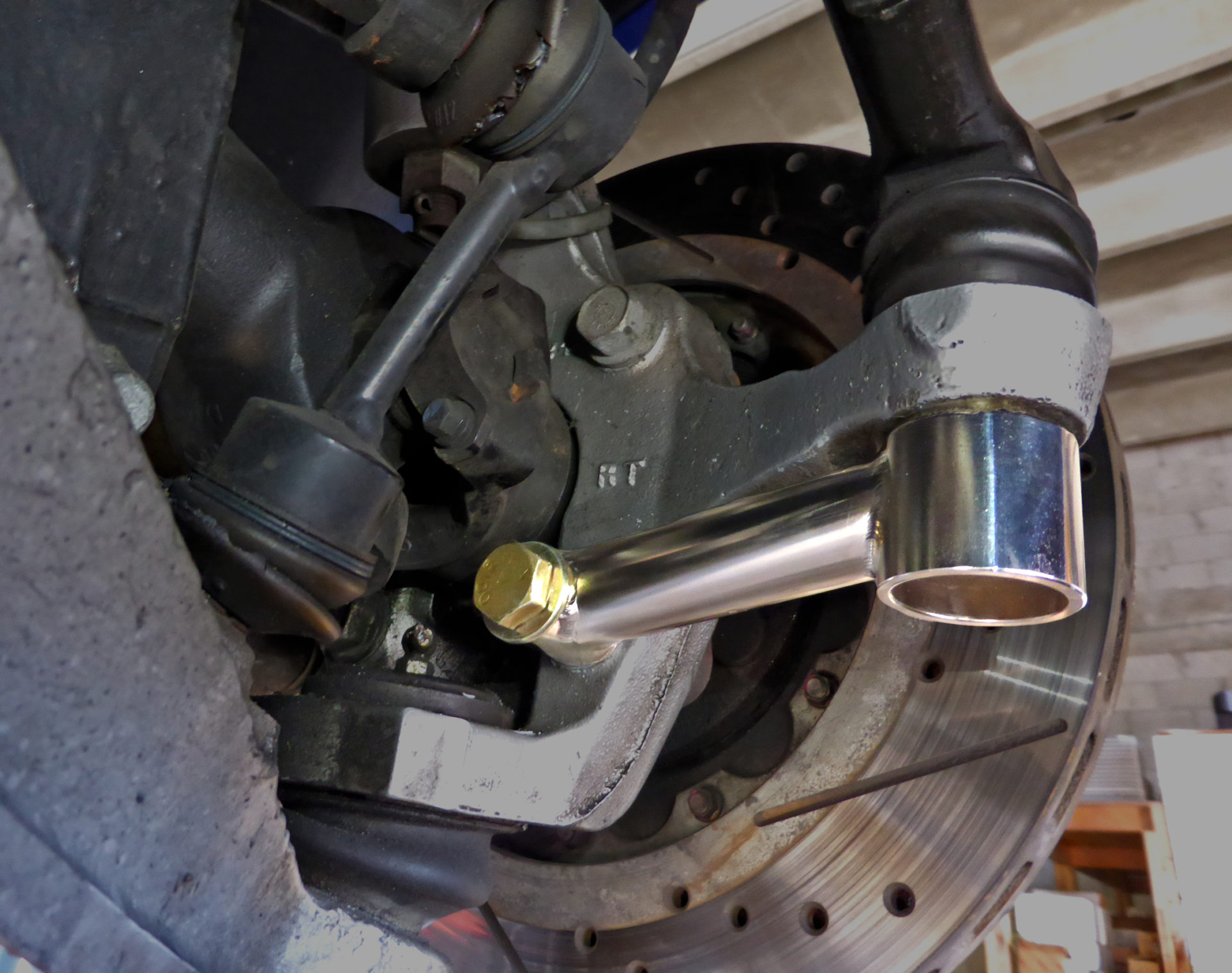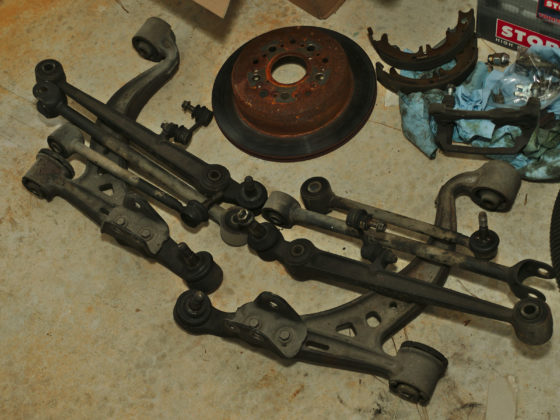
Erik recommends having the alignment checked after installing the Toe Stiffeners because he has seen them change the toe setting slightly once installed, more so on cars that have been tracked indicating that the arms were slightly bent from the forces already (which is concerning).
The stiffeners are fabricated from a jig that he made using brand new uprights. The stiffeners are strong enough that they will bring a slightly bent steering arm back to factory straight condition. If the stiffeners do not fit due to a significantly bent arm, Erik recommends getting a new upright as the steering arm strength will already be compromised.


Review:
The EMI Toe Stiffeners surprisingly made a night-and-day improvement to the precision and predictability during the transient phases of the corner, while noticeably increasing rear grip throughout the corner. This rear stability made it far easier to place the front of the car when turning into a corner, while improving power-down confidence due to greater feel and smoother breakaway characteristics of the tire, which made drifting far more confidence inspiring.
On the street, where cornering loads are (or shouldn’t be) anywhere near as extreme as on track, there is a minor improvement and ‘locked down’ feeling that may be noticeable by some sensitive drivers. However the improvement is probably noticeable by far more drivers when accelerating up to highway speeds on an on-ramp, or even moderate straight-line acceleration from slow speeds,
From Erik’s testing, toe deflection was reduced from 1/2″ TOTAL down to WITHIN 1/32″ TOTAL after the EMI Racing Toe Stiffeners were added.
Overall the EMI Toe Stiffeners eliminated the transient ‘wallowing’ behavior, made the car more stable, predictable, and improved the overall driving dynamics of the Viper. The car’s newfound precision is now at a level that’s respectable by modern standards with a chassis balance that’s better than most. These stiffeners transformed the car on track, despite already having a very flat cornering attitude, impressive grip, and (as it turns out) pretty decent body control from the stock springs and dampers, which I enjoyed thoroughly in Part 3: Baseline Track Testing.





23 comments
Great article! Any chance you could place a link up top as to where to get the stiffeners? They sound necessary and I’d love to buy them for my GTS as well. Thanks!
Wow; kind of concerning that the stock uprights were that marginal. The brace seems to take care of things but I guess it highlights stuff that didn’t get caught in the design stage.
… I swear, every time I see a new update in this series come up I start checking ebay.
You brought it to a shop for a 2 bolt nothing comes off bolt on????
Should we all start bribing Dave Coleman and Eric Hsu to write again?
Miatabusa………………
That is a pretty lame statement. Would you rather have no photography and no article?
He doesn’t wrench, but he can wheel better than any of the aforementioned names. Can relay what effects the setup changes made better than most and that is more signal and less noise.
Billy can wrench and he is pretty damn good. I have seen him do it. Why do some of you feel that you have to pick this article apart in such a dumb sniveling way? Wouldn’t you rather have the car on a lift with good photography rather than some weird angles and lighting on jack stands?
I would rather take better photos of the install on a lift and give credit to a friend and owner of a great shop than to show how cool I am for working out of my home garage with jackstands and a small, 10 gallon air compressor tank.
Exactly!
I’m with Brad. Where can I get a set of these? Thanks!
Hey Billy, I know exactly what you are feeling from damper testing I did with a certain company as a consultant a few years back. I was able to get rid of most of it through spring rate and damper tuning but some was still there. Now I know what was the issue. If we had these, I bet I could have backed off on some stuff and gotten more mechanical grip. I was really impressed by how well the Viper did on the track. Pounding really hard in the Arizona summer heat and no heat, tire or brake issues. When we were done, the car was a sweetheart to drive too. Tamed the bobbing and twichyness and went a few seconds a lap faster to boot. We tested and developed settings with Pirelli and Michelin slicks as well as the OEM tires.
That brace would work better made from square tubing.
I would say no since quite a bit of the load is torsional. Square section tubing is stiffer in straight bending though. It is also about 20% heavier for equivalent strength.
Just curious how does one measure/find out on the toe deflection. I can understand what a driver feels when it deflects but how did you measure to amount that was deflected?
I’m always fascinated by this. Keep up the great work/articles guys.
What I have done in the past is to make a simple fixture for a magnetic based dial indicator.
I’m assuming you’re measuring this after a session or doing a tear down to see if if the part/knuckle has deformed.
I can’t imagine you’re using that with a camera pointed at the whole dial jig whilst it’s on track. Haha
I believe Erik had the chassis on a kinematics rig and loaded the suspension to measure the deflection and/or had strain gauges & potentiometers on a car to measure the deflection.
This deflection is due to a lack of stiffness. This deflection is also (thankfully) lower than the yield point of the arm, at which it has been known to snap and not just deform.
I was not aware that aluminum could bend so much, so often, without breaking more easily than it does.
I’ve seen one or two similar products for Miatas (ND in particular), the front knuckle of which weighs like 2.x pounds. I’ve never heard of any breaking, but… has anyone else?
Where can one purchase the stiffeners??
Can someone please advise where these can be purchased? I am eager to install these and track test it.
How do I purchase a set for the rear on a 1997 GTS?
Great write up and wow… I knew the rear toe was an issue but never considered the upright. Makes perfect sense and I’m sold on Eriks solution. Attempting to contact him now, if only to save my uprights before I get more wild in my 99 GTS.
how does one get the EMI Toe Stiffener.
That is a very good question…